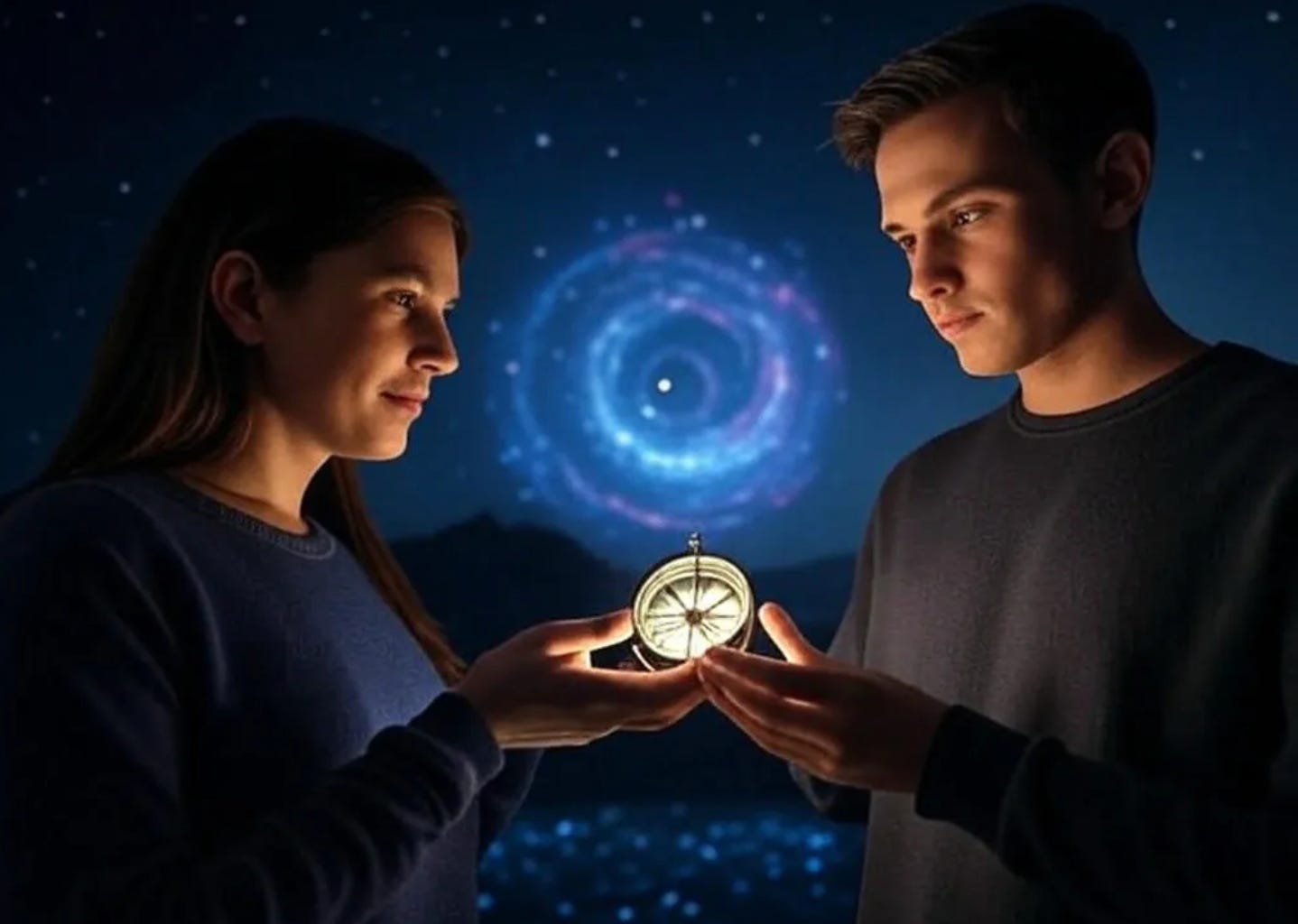The Chaos Compass
Navigating Uncertainty in an AI-Driven World
Innovation thrives in chaos, not order. AI is essentially a prediction engine that is tethered to its patterns. It handles the known very well. But in the unpredictable world of human affairs it can falter and is often stymied in its efforts to make an accurate assessment of the surrounding world. Deciphering the motivation behind market changes, and the seemingly sudden switches in cultural mores is beyond its capability, and probably always will be. According to Daniel Kahneman in his book, Thinking, Fast and Slow, “Our comforting conviction that the world makes sense rests on a secure foundation: our almost unlimited ability to ignore our ignorance.” Humans are essentially non-rational creatures while AI systems can do nothing else but perform in a rational manner. Hence, we seem to have an insurmountable clash of paradigms.
But for entrepreneurs and artists, embracing uncertainty is a strategic asset. By diving into the chaos, with curiosity, alertness, and a willingness to adapt to an ever-changing environment, creators can learn valuable lessons that cannot be learned in any other way. Plus, there is always the possibility of striking the mother lode–however you may wish to define that. But there is no other way to find truly valuable things except for rolling one's sleeves up and getting stuck in.
In Order Out of Chaos, Ilya Prigogine and Isabelle Stengers argue that structures far from equilibrium in which the composite elements are scattered and moving erratically, like steam is by heat, for example, generate complexity by virtue of their instability. Life itself did not emerge from blueprints but is an emergent property of random chemical and evolutionary forces. Their complexity theory implies this chaos is the crucible of creation.
For creators, this translates to markets or artistic fields where unpredictability reigns are the best places to pursue new ideas and innovations. AI, as Ming-Hui Huang and Roland Rust note in 'A Strategic Framework for Artificial Intelligence in Marketing' thrives on stable patterns but struggles with cultural shifts or emotional nuance.
"Although using feeling AI for two-way interactions involving humans and for analyzing human feelings and emotions is common in marketing due to the high-touch nature of many marketing functions (e.g., frontline interactions, customer service, and emotional ad appeals), we don’t yet have true emotional machines that can recognize, act, and react to human emotions appropriately. The substitutive use of mechanical and thinking AI for feeling AI may generate some unintended consequences."
What is needed is a kind of chaos compass, which can use human instinct for navigating uncertainty where the algorithms cannot go.
But that doesn't mean behaving recklessly or wandering around uselessly hoping to strike it lucky. Amy Edmondson in her article 'Strategies for 'Learning from Failure,' points out the advantages of trying out something at a small scale, failing, learning, and moving on.
"Discovering new drugs, creating a radically new business, designing an innovative product, and testing customer reactions in a brand new market are tasks that require intelligent failures. “Trial and error” is a common term for the kind of experimentation needed in these settings, but it is a misnomer, because “error” implies that there was a “right” outcome in the first place. At the frontier, the right kind of experimentation produces good failures quickly."
These kinds of strategies can counter AI’s tedious certainty. But as Margaret Boden says in her book The Creative Mind, that while AI lacks intent it can be used as a tool for exploration. "English grammar allows for sentences even about purple spotted hedgehogs, so other generative systems implicitly define a structured space of computational possibilities. Heuristics are ways of selectively – insightfully – moving through this space and/or of transforming it, sometimes by changing other heuristics."
So all is not lost. We don’t have to have an AI vs. Human scenario. With human guidance we can open up the possibility of there being a genuine co-creating space. Although, AI's hallucinations—plausible but false returns—undermine trust, we can still use it to explore new conceptual spaces. The more that we learn together through intelligent exploration, the more the AI heuristics are updated, and so on in a virtuous circle.
Background Reading:
Daniel Kahneman, (2011), Thinking, Fast and Slow. https://us.macmillan.com/books/9780374533557/thinkingfastandslow/
Barrett, F. J. (1998). Creativity and improvisation in jazz and organizations: Implications for organizational learning. DOI: 10.1287/orsc.9.5.605
Boden, M. A. (2004). The Creative Mind: Myths and Mechanisms (2nd ed.). https://fulldisclosure.info/Files/Books/The%20Creative%20Mind%20%20Myths%20and%20Mechanisms.pdf
Edmondson, A. C. (2011). Strategies for learning from failure. Harvard Business Review, 89(4), 48–55. Available: https://hbr.org/2011/04/strategies-for-learning-from-failure
Prigogine, I., & Stengers, I. (1984). Order Out of Chaos: Man’s New Dialogue with Nature. Bantam Books.
Simonton, D. K. (1999). Origins of Genius: Darwinian Perspectives on Creativity. Oxford University Press.




Thought provoking points made there 🤔